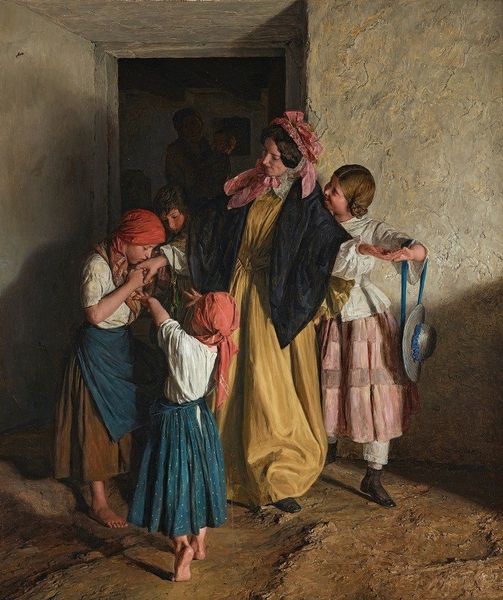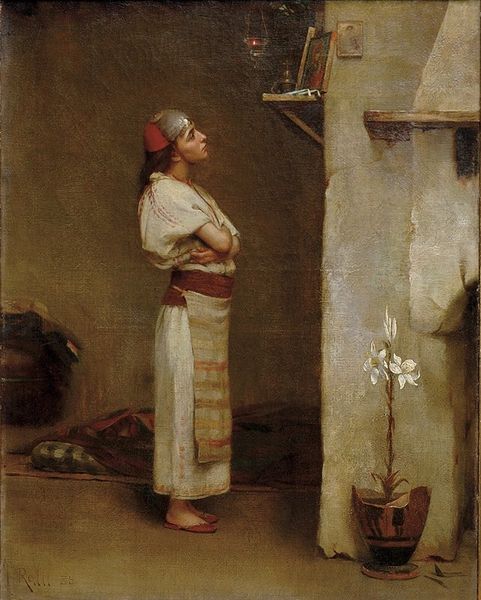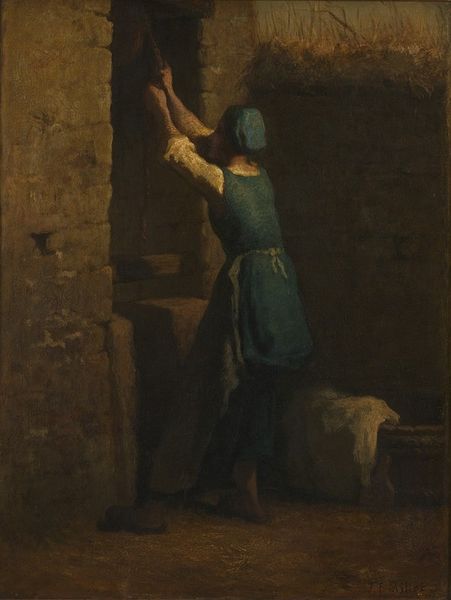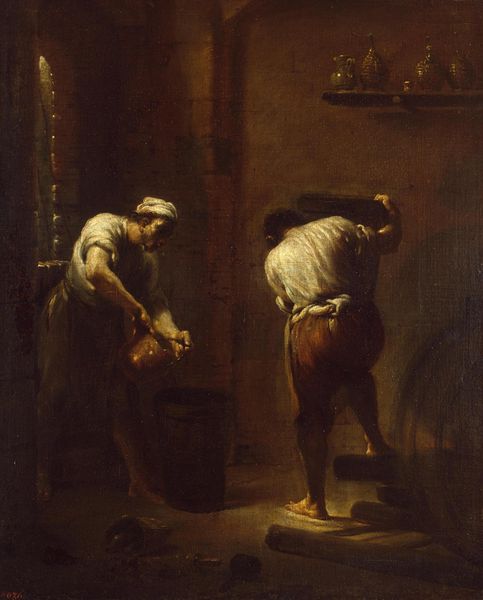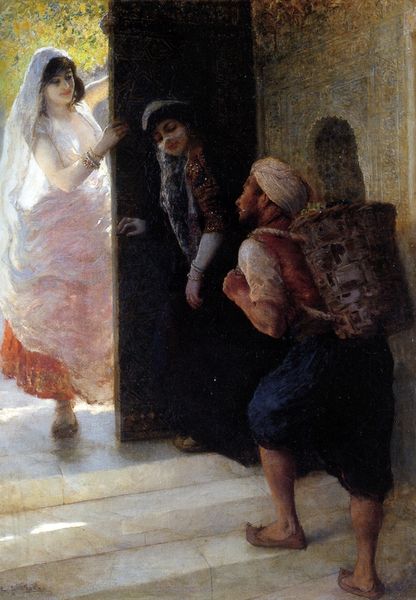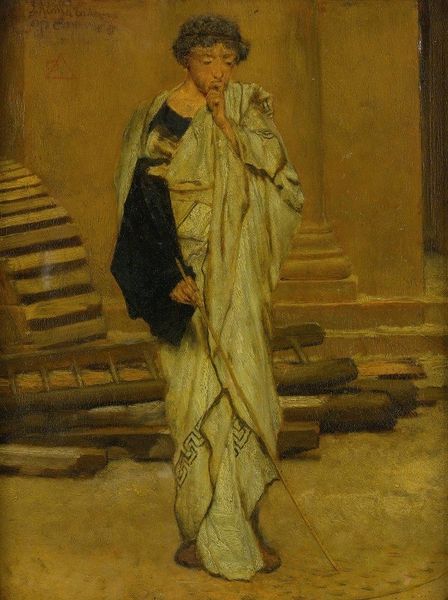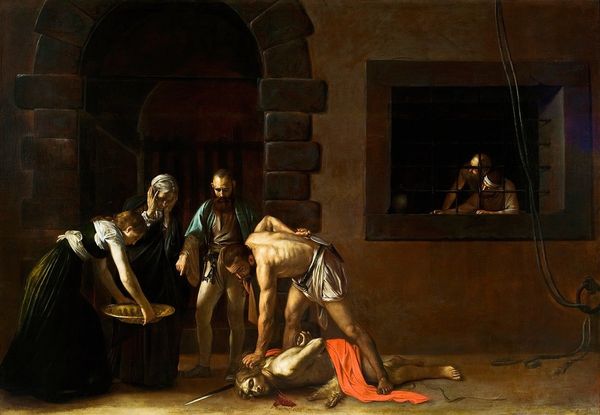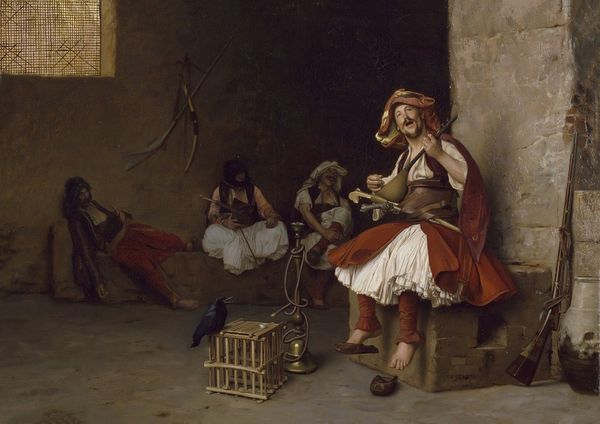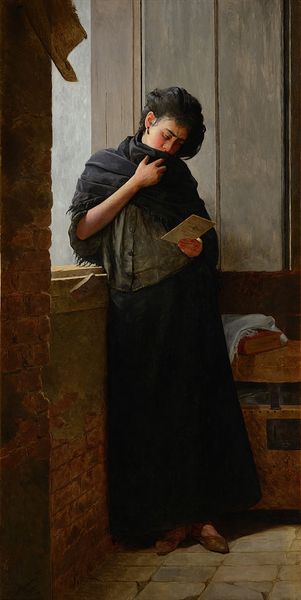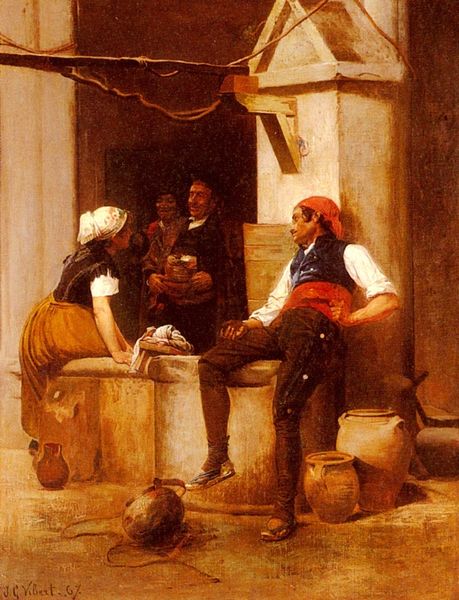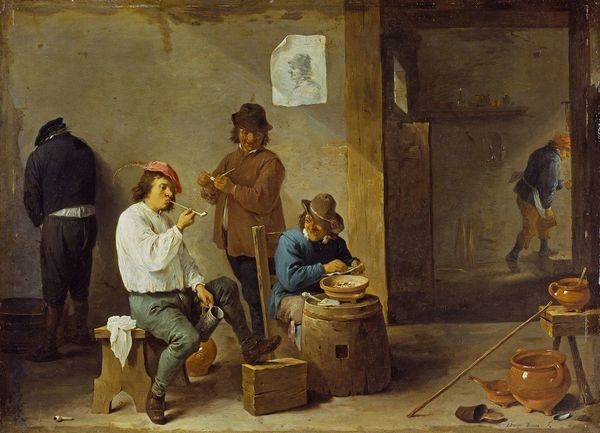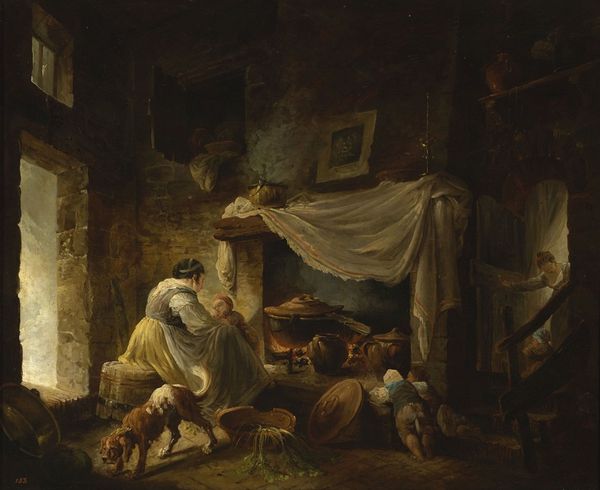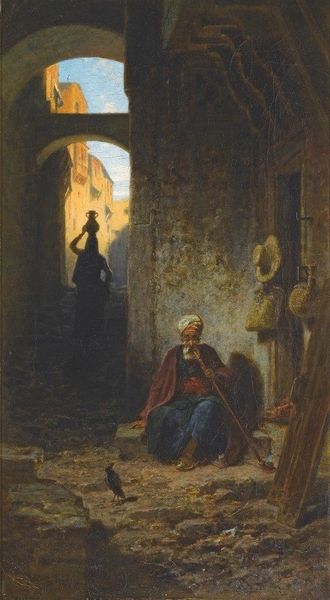
oil-paint
#
portrait
#
figurative
#
oil-paint
#
oil painting
#
orientalism
#
genre-painting
#
portrait art
Copyright: Public Domain: Artvee
Curator: This is Léon Bonnat’s "An Oriental Barbershop," painted in 1872 using oil paint. What stands out to you about it? Editor: The immediate impression is one of stillness, a captured moment of everyday life, though there’s a melancholy air around the seated man, a weariness that tempers any simple exoticism. Curator: It’s interesting you say that. Bonnat was known for his academic realism, but paintings like this participated in the broader trend of Orientalism in 19th-century European art, an art that imagined and depicted the “Orient” often through a lens of Western ideals. Editor: Exactly, and that raises crucial questions about representation, power dynamics, and the construction of identity. How does Bonnat's painting contribute to or challenge these stereotypes and colonial narratives? The barber’s whiteness is obscured. Curator: The politics are undoubtedly tangled. On one hand, such depictions were popular with a European audience hungry for exotic images. They perpetuated an idea of the "Orient" as timeless and unchanging, reinforcing Western dominance. However, looking through our contemporary understanding, isn't Bonnat also humanizing his subject by capturing what seems like an intimate moment? Editor: I think it’s less about simple humanization, but perhaps how the market and the academy elevated such seemingly "authentic" scenes. Considering that such patronage fueled a visual language with inherent colonial biases, what does it tell us about power structures inherent in 19th-century artistic institutions? Also, is it just me or does the composition draw upon a lot of previous academic portraiture. Curator: Indeed. If you notice the gaze in many works, it’s almost as if the seated man's slumped posture challenges traditional depictions of masculinity and labor from that era. His vulnerability, if we can call it that, complicates the Orientalist stereotype of exoticism. Editor: Perhaps, but that interpretation hinges on recognizing and unpacking our contemporary lenses through which we look, in relationship to post-colonial art theory, but more questions keep springing to mind. How can we exhibit and discuss art from these fraught contexts, acknowledging the past without replicating its inequities in our present practices? Curator: It is a tricky balance, I find. Art like Bonnat's invites us to critically assess our assumptions and the visual histories we have inherited. Hopefully, such honest dialogue becomes more common, and even challenges some art historical presumptions. Editor: Precisely, I hope it will do the same!
Comments
No comments
Be the first to comment and join the conversation on the ultimate creative platform.
